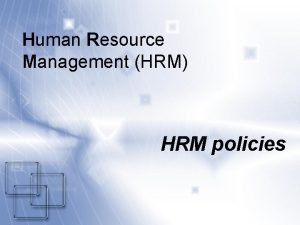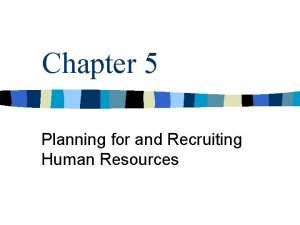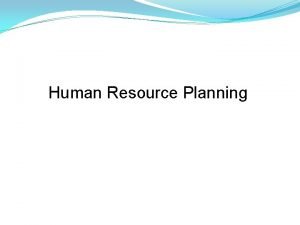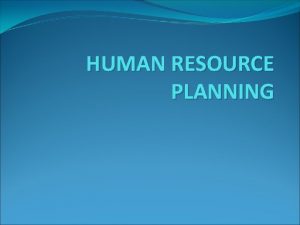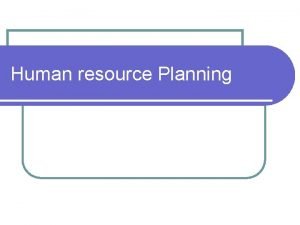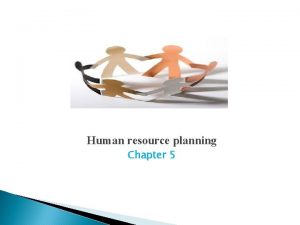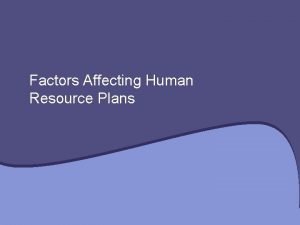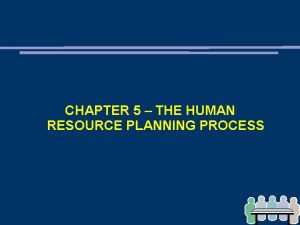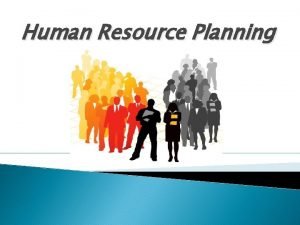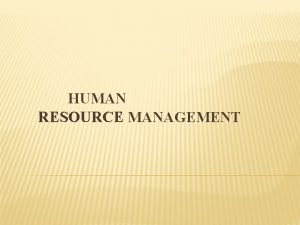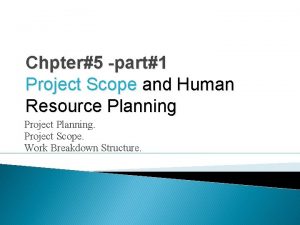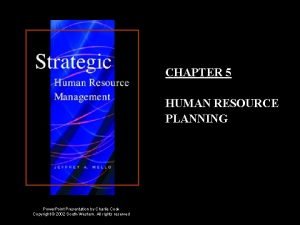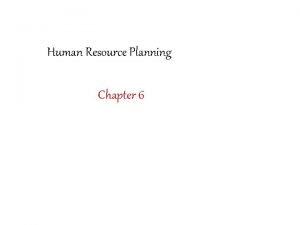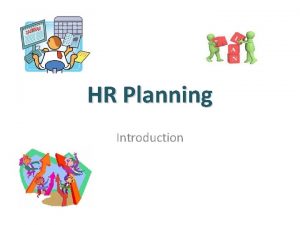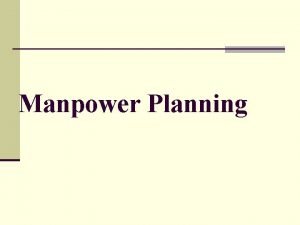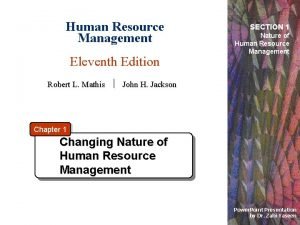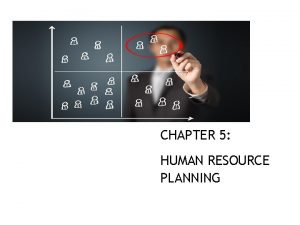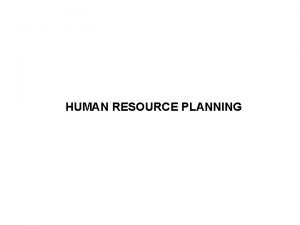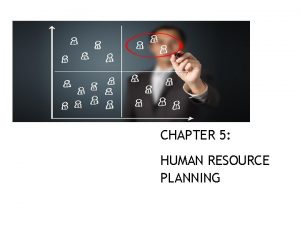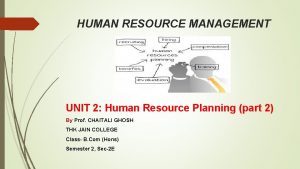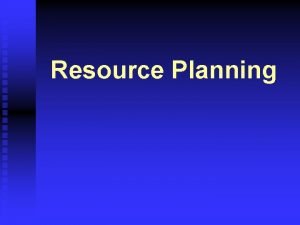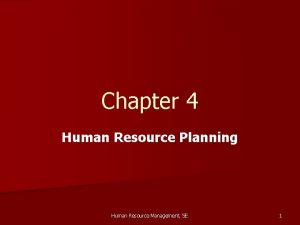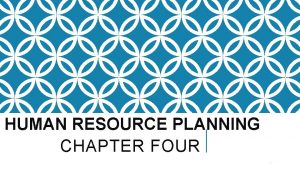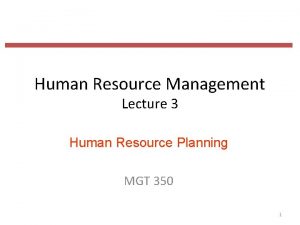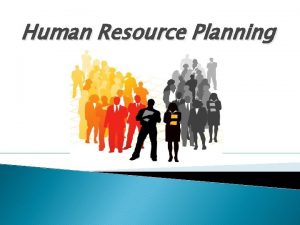Unit III Human resource planning and hiring policy



















- Slides: 19

Unit III Human resource planning and hiring policy By: Prof. Bhavini Patel GWCET

Meaning of HRP is the process by which an organisation confirms that it has the right number and the right kind of people, at the right place, at the right time to achieve and fulfill its goals and objectives. It is a system of matching the supply and demand with the openings and vacancies of the organisations.

Features of HRP Dynamic activity Well defined objectives Manpower inventory Develops policies Adjusts demand supply Creates work environme nt

Need of HRP • • • To meet organisational changes To meet technological changes To adjust with govt policies To meet the skill shortages To cover up the lead time. To fit in the employment and unemployment situation

Process of human resource planning Environment scanning Organisational objectives HR demand forecast HR supply forecast Estimating manpower gap surplus Shortage/ deficit Action plan Monitoring and control

Factors affecting HRP External factors Political Economical Social Technological Internal factors company policies trade unions time and quality of inforamtion

Importance of HRP • Serve as reservoir of talent • Prepare people for challenges • Facilitates smooth expansion of scale of operations • Helps in controlling manpower costs • Helps in economic development

Limitations of HRP • • • Inaccuracy of forecasts Requires support of top management Resistance from employees Lack of technical feasibility Uncertainity Expensive and time consuming

selection Selection is the process of picking up individuals with the required qualifications and competence to fill up the job vacancies in the organisation It is the process of examining the applicants in respect to their suitability for the given jobs and choosing the best among them.

Selection process Screening the applications Selection tests Selection interviews Medical examination Reference check and background verification Hiring decisions or approval

Selection tests Aptitude test Achievement test Intelligence test Job knowledge Mechanical apti test Work sample Clerical apti test Situational test Interest test Personality test Group discussion Objective tests In basket Projective tests

interviews It is a purposeful interaction between the employer and the employee to gain maximum knowledge and ideas about the job and the person applying for the job.

Types of interview Patterned or structured exit unstructured Depth Informal Group panel formal stress

Factors affecting selection & recruitment External factors • • • Supply and demand Labour market Image and goodwill PEST Unemployment rate competitors internal factors • Recruitment policy • Human resource planning • Size of the firm • Cost of recruitment • Growth and expansion

Induction refers to the considerable amount of time spent during the recruitment process by the employing company for the prospective employees as a part of orientation and introduction. Induction is the introduction of a person to the job and the organisation. Induction makes the employee feel at home and develop a sense of pride towards the organisation and helps in creating commitment for the job and the organisation.

Induction programme Contents: • Brief history and operations of the company • The company’s organisational structure • Policies and procedures of the company • Products and services of the company • Location of departments and employee facilities • Safety measures • Grievance procedures • Employee activities • Counselling services

Prerequisites of effective induction • • Information to the employees Company information Handbooks/manual/power point presentation Documentation and other paper work

Internal mobility of employees Promotions • Seniority based • Merit based • Seniority cum merit based Transfers Demotions • • Penal transfer Shift transfer Remedial transfer Versatility transfer Request transfer Mutual transfer Replacement transfer

Employee separation Voluntary Resignation Retirement Involuntary lay off dismissal retrenchment VRS downsizing
 What is hr policies
What is hr policies Short term human resources examples
Short term human resources examples Human resource planning and retention
Human resource planning and retention Chapter 5 personnel planning and recruiting
Chapter 5 personnel planning and recruiting Zero base forecasting
Zero base forecasting Hr planning meaning
Hr planning meaning Hr planning meaning
Hr planning meaning Hr planning meaning
Hr planning meaning Steps of human resource planning
Steps of human resource planning Human resource management question papers
Human resource management question papers Factors affecting human resource management
Factors affecting human resource management Supply forecasting techniques in hrp
Supply forecasting techniques in hrp Swot analysis introduction
Swot analysis introduction What is human resource planning definition
What is human resource planning definition Wbs human resource management
Wbs human resource management Human resource planning powerpoint presentation
Human resource planning powerpoint presentation Objectives of hrp
Objectives of hrp Hr definition
Hr definition E.w. vetter
E.w. vetter Nature of hrm
Nature of hrm
